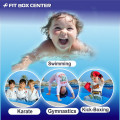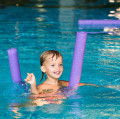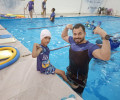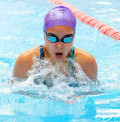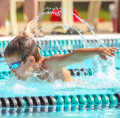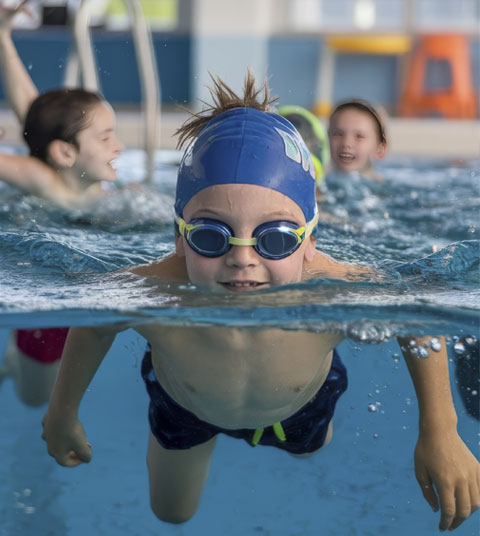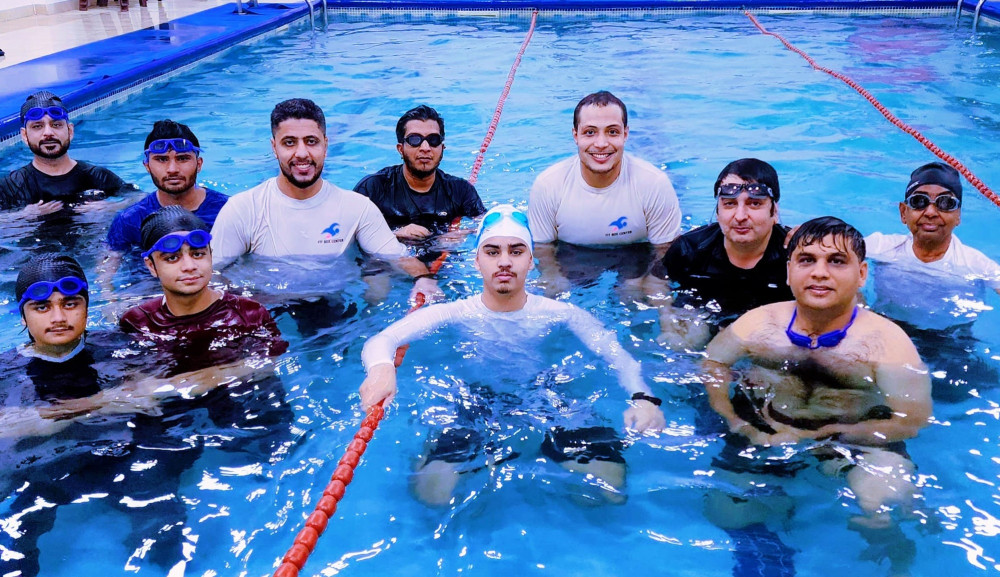
Swimming engages almost every muscle in your body
2024-07-14 - swimmingIntroduction
Summer is the perfect time to dive into the refreshing world of swimming. Whether you're looking to beat the heat or find a fun way to stay fit, swimming offers a plethora of benefits. But why is swimming particularly advantageous for adults during the summer? Let's explore the myriad reasons that make swimming an excellent choice for adults during the sunny season.
Full-Body Workout
Unlike many other forms of exercise, it provides a full-body workout that tones muscles, builds strength, and enhances flexibility. When you swim, you're not just moving your arms and legs; you're engaging your core, back, and even your neck muscles.
Cardiovascular Health
Swimming is a fantastic cardiovascular exercise. It gets your heart pumping and improves circulation. Regular swimming can lower blood pressure, reduce the risk of heart disease, and improve overall cardiovascular health. It's like giving your heart a gentle, yet effective, workout.
Mental Well-being
The rhythmic nature of swimming has a meditative effect. It allows you to clear your mind and focus on your movements and breathing. This can significantly reduce stress and anxiety levels. Plus, the endorphins released during swimming can boost your mood, leaving you feeling happier and more relaxed.
Weight Management
Swimming is an excellent way to burn calories. Depending on the intensity and stroke, you can burn anywhere from 200 to 700 calories per hour. It's a low-impact exercise, making it easier on the joints while still being highly effective for weight management.
Meeting New People
Swimming can be a social activity. Joining a swimming class or a local swim club is a great way to meet new people who share your interest. It's a wonderful opportunity to make friends and expand your social circle.
Strengthening Bonds
Swimming with family or friends can strengthen relationships. Whether it's a day at the pool or a beach outing, the shared experience of swimming together can create lasting memories and deepen connections.
Fun Group Activities
Many swimming spots offer group activities like water polo, synchronized swimming, or water aerobics. These activities are not only fun but also provide a great way to stay active and engaged with others.
Swimming for Stress Relief
Relaxation Techniques
The buoyancy of water makes swimming a relaxing experience. Floating in water can alleviate physical tension, and the gentle resistance provides a soothing massage to your muscles. Practicing relaxation techniques like slow, deep breathing while swimming can enhance this calming effect.
Mindfulness in the Water
Swimming allows you to practice mindfulness. Focusing on your strokes, breathing, and the sensation of water can help you stay present in the moment. This mindfulness can reduce stress and improve mental clarity.
Understanding Your Limits
It's important to know your swimming abilities and not to push beyond your limits. Start slow and gradually increase your swimming intensity and duration.
Staying Hydrated
Swimming can be deceptively dehydrating. Make sure to drink plenty of water before, during, and after your swim to stay hydrated.
Sun Protection
If you're swimming outdoors, protect your skin from the sun. Use waterproof sunscreen, wear a hat, and try to swim during the cooler parts of the day, like early morning or late afternoon.
Choosing the Right Swimming Gear
Swimsuits
Select a comfortable and well-fitting swimsuit. The right swimsuit can make a significant difference in your swimming performance and comfort.
Goggles
Invest in a good pair of goggles to protect your eyes from chlorine and improve visibility underwater.
Swim Caps
Swim caps can protect your hair from chlorine and reduce drag, making your swim more efficient.
Finding the Perfect Swimming Spot
Local Pools
Community pools are convenient and often offer swimming classes and lap swimming times.
Beaches
Swimming in the ocean can be a thrilling experience. However, be aware of tides and currents, and always swim in designated areas.
Lakes and Rivers
Freshwater swimming in lakes and rivers can be refreshing. Just ensure the water quality is safe and be cautious of natural hazards.
Tips for Beginner Swimmers
Learning Basic Strokes
Start with the basics. Learn strokes like the freestyle, breaststroke, and backstroke. Each stroke has its own benefits and can help you become a more versatile swimmer.
Breathing Techniques
Proper breathing is crucial in swimming. Practice rhythmic breathing to avoid getting winded and to maintain a steady pace.
Overcoming Fear of Water
If you're anxious about swimming, start in shallow water and gradually build your confidence. Taking a beginner's swimming class can also help you feel more comfortable in the water.
Advanced Swimming Techniques
Improving Speed and Endurance
Once you're comfortable with the basics, work on your speed and endurance. Interval training can help you swim faster and longer.
Perfecting Strokes
Focus on perfecting your strokes to swim more efficiently. Consider getting feedback from a swim coach or using video analysis to improve your technique.
Interval Training
Incorporate interval training into your routine. Alternate between high-intensity sprints and low-intensity recovery periods to boost your swimming performance.
Incorporating Swimming into Your Fitness Routine
Creating a Schedule
Plan your swimming sessions and stick to a regular schedule. Consistency is key to reaping the benefits of swimming.
Mixing with Other Workouts
Combine swimming with other forms of exercise like running, cycling, or strength training for a balanced fitness routine.
Tracking Progress
Keep track of your swimming progress. Record your times, distances, and any improvements in technique to stay motivated.
.


